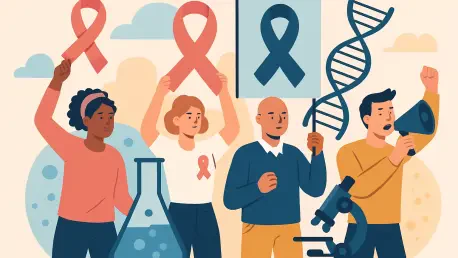I’m thrilled to sit down with Ivan Kairatov, a biopharma expert with extensive experience in research and development, as well as a deep understanding of technology and innovation in the industry. Today, we’ll dive into the critical intersection of cancer research, advocacy, and policy, exploring how personal stories fuel systemic change, the importance of federal funding for groundbreaking research, and the role of prevention and accessible healthcare in the fight against cancer.
How do personal experiences with cancer, like surviving the disease or losing a loved one, shape the drive for advocacy and innovation in biopharma?
Personal experiences are often the most powerful motivators for change in this field. When someone has battled cancer or watched a family member struggle, it brings a human face to the data and research we deal with every day. It pushes us to think beyond the lab—about real lives, real pain, and real hope. In my work, I’ve seen how these stories inspire not just advocates but also researchers and policymakers to prioritize funding and innovation. They remind us why we’re developing new therapies or pushing for better screening tools. It’s not just about science; it’s about ensuring fewer families go through that heartbreak.
What role do events like advocacy summits in Washington, D.C., play in advancing cancer research and policy?
These summits are game-changers. They bring together survivors, patients, and experts to directly engage with lawmakers, which is crucial for translating complex science into actionable policy. When advocates share their stories, it cuts through the noise of budget debates and political agendas. I’ve seen how these interactions can sway opinions and secure commitments for funding. They also foster collaboration—researchers like me get insights into real-world needs, while advocates learn about the latest innovations. It’s a bridge between the lab and the Capitol that drives progress.
Why is sustained federal funding for institutions like the National Institutes of Health and the National Cancer Institute so vital to the biopharma industry?
Federal funding is the backbone of cancer research. The NIH and NCI support foundational science—think early-stage studies on cancer biology or novel drug targets—that private companies often can’t or won’t take on due to high risk and long timelines. In my career, I’ve relied on their grants and data to develop therapies that wouldn’t exist otherwise. Without this investment, we’d see a dramatic slowdown in new treatments. Proposed cuts, like the ones floating around, could set us back decades, undoing progress on declining death rates and leaving patients with fewer options.
How do prevention programs, often supported by agencies like the Centers for Disease Control and Prevention, complement the work being done in treatment development?
Prevention and treatment are two sides of the same coin. While I’ve spent much of my career on therapies, I know that stopping cancer before it starts is just as critical. CDC programs—like vaccination campaigns for HPV or smoking cessation initiatives—reduce the burden on our healthcare system and save lives. They also inform our work in biopharma by highlighting risk factors we can target with new drugs or diagnostics. If we skimp on prevention, we’re just playing catch-up with more advanced, harder-to-treat cases down the line.
Can you explain the significance of accessible healthcare options, such as tax credits for insurance, in ensuring patients benefit from biopharma innovations?
Absolutely. The best treatment in the world means nothing if patients can’t afford to access it. Tax credits and affordable insurance plans help bridge that gap, ensuring people can get screenings, therapies, or follow-up care without breaking the bank. In biopharma, we pour years into developing cutting-edge drugs, but if the system leaves patients behind, our work falls short. These policies are essential to make sure innovations reach everyone, not just a select few. Without them, health disparities widen, and outcomes suffer.
What’s your forecast for the future of cancer research and advocacy over the next decade?
I’m cautiously optimistic. We’re on the cusp of incredible breakthroughs—think precision medicine, AI-driven drug discovery, and multi-cancer early detection tools. But the trajectory depends heavily on policy and funding. If advocacy continues to grow and lawmakers prioritize research, we could see cancer become a manageable chronic condition for many more people. On the flip side, if budgets shrink or access issues persist, progress will stall. The next decade will hinge on collaboration—between scientists, advocates, and policymakers—to keep the momentum going and ensure no one is left behind.









